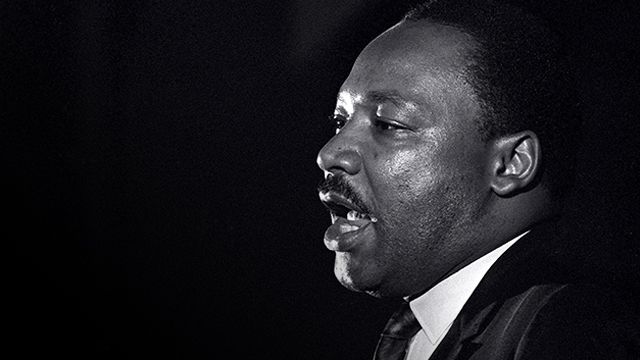
During a speech at Stanford University in 1967, one year before he was assassinated, Dr. Martin Luther King, Jr. said, “there are literally two Americas. One America is beautiful… overflowing with the milk of prosperity and the honey of opportunity.
“But tragically and unfortunately, there is another America. This other America has a daily ugliness about it that constantly transforms the ebullience of hope into the fatigue of despair. In this America millions of work-starved men walk the streets daily in search for jobs that do not exist. In this America millions of people find themselves living in rat-infested, vermin-filled slums. In this America people are poor by the millions. They find themselves perishing on a lonely island of poverty in the midst of a vast ocean of material prosperity.”
Not much has changed since 1967. Take a look at these charts about American poverty from King’s day through today using data from the U.S. Census Bureau.
When King delivered his “Two Americas” speech, a household in the top five percent income bracket was at least six times wealthier than a household in the bottom twenty percent. Since the late 1960s, the rich have been growing wealthier far more quickly than the poor.
During the 1960s, poverty declined in the United States, partially because of a thriving economy and partially because of the measures implemented during President Johnson’s War on Poverty, but a significant portion of Americans were still living in poverty by the end of the decade. The year King died, the poverty rate was 12.8 percent. Five years later, in 1973, it hit a low of 11.1 percent. But today, 15 percent — roughly a sixth — of Americans live in poverty.
Families headed by single mothers suffer worst. In King’s time and still today, a family headed by a single mother is roughly three times as likely to be impoverished. Roughly a third of all families headed by a single mother live in poverty today.
Racial economic inequality was even more dramatic in King’s day, but poverty is still heavily determined by race. Over a quarter of black and Latino Americans are below the poverty line, compared with only about a tenth of whites.
Today, about 16 million children live in poverty. These figures too are heavily determined by race. This chart resembles the one above, except the scale is different. Children are far more likely to be impoverished than adults. Thirty-seven percent of black children and thirty-four percent of Latino children live in poverty today.

